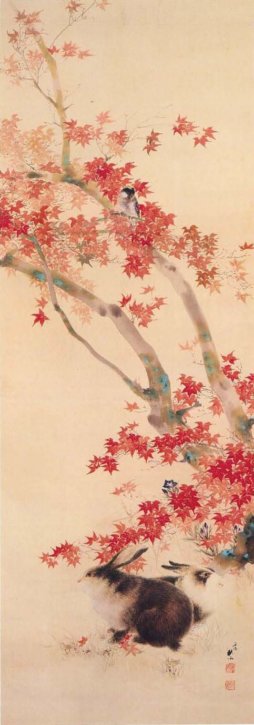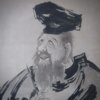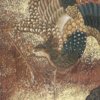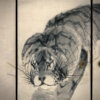Okutani Shūseki: A Painter Who Played a Central Role in Kyōto Painting Circle from Meiji Period to the Early Shōwa Period
Japanese Maple Tree and Two Rabbits

Okutani Shūseki was born in Osaka in 1871. Shūseki was a disciple of Mori Kansai who had a painting style like Maruyama Ōkyo’s. He lived and played an active part in Kyōto. He studied together with Yamamoto Shunkyo under Kansai.
“Japanese Maple Tree and Two Rabbits” has truly colorful and gorgeous autumn leaves that make you think of his master Kansai’s Kōyō-zu (autumn leave painting). A large, mossy maple trunk is laid big on the screen, and the branches growing from the trunk are overlaid with beautiful autumn leaves to express the autumn atmosphere. At the base of the maple, which is colored with autumn leaves, there are kikyōs (balloon flowers), one of the typical autumn flowers, and its purple flowers and blooming as if they are competing with the autumn leaves. Around the grass near the roots of the old maple tree, which has become wet in the rain and has increased its color, two rabbits are drawn interlacing with the tree. It can be seen that the coat color of the twin rabbits has already changed to the white coat color, which is a protective color for winter. The protagonists of this painting are the autumnal maple and the twin rabbits, but in the autumnal leaves, a wild bird that rests on a branch is drawn and even its white chest hair is lighted red. In Japan, there are flowers and plants for each season, and there are birds and beasts that are associated with them. People have enjoyed painting the seasonal colors of plants and animals that are familiar and changing. In each of Japan’s nature of four seasons, Kachō-ga (painting of flowers and birds) have often been drawn as seasonal paintings. Shūseki’s “Japanese Maple Tree and Two Rabbits” can also be understood as a typical example of autumn painting.










